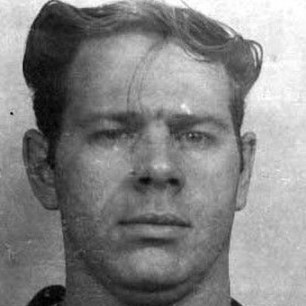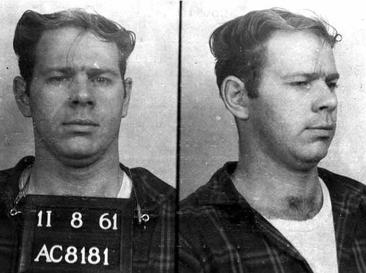
1936 - 1978
Robert Francis Garrow Sr.
Summary
Name:
Robert Francis Garrow Sr.Years Active:
1961 - 1973Birth:
March 04, 1936Status:
DeceasedClass:
Serial KillerVictims:
4Method:
StabbingDeath:
September 11, 1978Nationality:
USA
1936 - 1978
Robert Francis Garrow Sr.
Summary: Serial Killer
Name:
Robert Francis Garrow Sr.Status:
DeceasedVictims:
4Method:
StabbingNationality:
USABirth:
March 04, 1936Death:
September 11, 1978Years Active:
1961 - 1973bio
Robert Francis Garrow Sr. was born on March 4, 1936, in Dannemora, New York. He grew up in a poor family with French-Canadian roots. His parents, Robert Omer Garrow and Margaret, were farmers. Their home life was troubled. Garrow later claimed that his parents were violent and often abused their children. He said they used whatever objects were nearby, including bricks, for punishment. His siblings supported his claims about the abuse they suffered.
As a child, Garrow experienced violent conflicts with his father, who struggled with alcoholism. Police had to come to their home several times to stop these fights. When Garrow was 15 years old, a particularly harsh argument led to him being sent to a prison farm to work. During this time, he reported having sexual issues and inappropriate behaviors. He later admitted to having sexual encounters with farm animals and using milking machines in a sexual manner.
After his time at the prison farm, Garrow joined the United States Air Force. However, his military career was short-lived. He was court-martialed within a year for stealing money from a superior officer. This led to a six-month stay in a military prison located in Florida. After his release, Garrow returned to New York in 1957, where he got married and became a father. Despite this, he faced difficulties finding stable work. He was often fired from jobs and became involved in harmful relationships.
In 1961, Garrow was arrested and pleaded guilty to first-degree rape. He received a sentence of 10 to 20 years in prison. He was paroled in 1968 but soon found himself in trouble again.
murder story
In July 1973, Robert Garrow launched an 18-day spree killing across New York State. During this rampage, he kidnapped, raped, and fatally stabbed four people, including a teenage camper. Three other potential victims escaped and alerted authorities, triggering the largest manhunt in New York State history at the time. Law enforcement set up roadblocks and searched vehicles throughout the Adirondack region while warning motorists against picking up hitchhikers.
Garrow evaded capture for nearly two weeks until cornered by police in the woods, 60 miles north of the murder scenes. During his arrest, he was shot multiple times, leaving him partially paralyzed. Tried in 1974, Garrow pleaded not guilty by reason of insanity, but the jury found him guilty of second-degree murder and sentenced him to 25 years to life in prison.
The case gained national attention for the "Buried Bodies Case," in which Garrow privately confessed to his attorneys the locations of additional victims' bodies. They refused to disclose this information, citing attorney–client privilege, sparking a landmark legal ethics debate that shaped U.S. law.

While incarcerated, Garrow manipulated prison officials by feigning paralysis, eventually securing a transfer to a lower-security unit at Fishkill Correctional Facility. On September 8, 1978, with a smuggled pistol provided by his son, Garrow scaled a 15-foot fence and escaped. Three days later, during a manhunt near the prison, Garrow exchanged gunfire with pursuing officers, wounding one guard before being fatally shot by correctional officers on September 11, 1978.
Authorities later connected Garrow to other unsolved murders. Canadian investigators named him the prime suspect in the May 1973 murder of Adele Komorowski in Hamilton, Canada, and he remains a suspect in the 1959 murder of Ruth Whitman. Although never conclusively proven, these cases suggest Garrow may have been responsible for additional killings beyond his four confirmed victims.